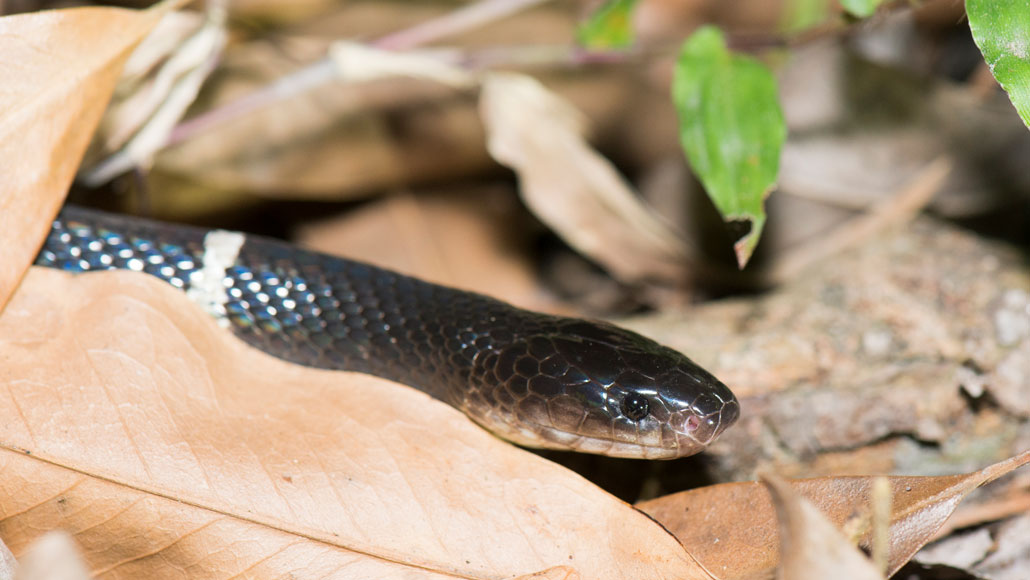No, snakes probably aren’t the source of that new coronavirus in China
New research pinpoints the reptiles, but virus researchers aren’t convinced

A new study reports snakes, such as the many-banded krait (pictured), may be behind a mysterious coronavirus outbreak in China. But some researchers say the data don’t support that conclusion.
LiCheng Shih/flickr.com (CC BY 2.0)
- More than 2 years ago
An outbreak of a pneumonia-like virus in China has scientists puzzling over the disease’s origins and searching for animals that may have spread it to humans. A new study points to snakes as the culprit, but other researchers are skeptical.
It’s unlikely the virus jumped from a reptile to a human, says Edward Holmes, a virologist at the University of Sydney. “I can’t categorically say it’s never happened,” he says. “But the [animal] reservoirs for human viruses are mainly mammals and maybe birds.”
Animals are often the source of human disease outbreaks. Many recent and ongoing epidemics are zoonotic, getting their start in animals, such as the 2014–2016 Ebola outbreak in Africa and Zika virus that hit the Americas in 2016. (Scientists suspect bats are behind Ebola’s jump from animals to people (SN: 12/31/14); Zika is from nonhuman primates (SN: 2/8/17).) Knowing what animals carry the virus behind the new disease outbreak can help people protect themselves from exposure.
The current outbreak in China is caused by a coronavirus, a group of viruses behind diseases such as the common cold, as well as the more deadly severe acute respiratory syndrome, or SARS, and Middle East respiratory syndrome, or MERS (SN: 1/23/20).
Both SARS and MERs began in bats, then moved into another animal, called an intermediate host, before spreading to humans. In the case of SARS, these animals were civets, while intermediate hosts for MERS, which continues to infect people in the Middle East, are camels (SN: 2/25/14).
For the new coronavirus — currently called 2019-nCoV — scientists don’t yet know how humans contracted the disease. But a new study published January 22 in the Journal of Medical Virology suggests snakes might be the source.
Wei Ji, a microbiologist at Peking University Health Science Center School of Basic Medical Sciences in Beijing, and his colleagues analyzed codons used by 2019-nCoV. Codons, which are trios of DNA or RNA that dictate amino acids in a protein, tend to be similar between a virus and the animal it infects. The team compared 2019-nCoV’s codons with those in potential animal reservoirs, including humans, chickens, bats, hedgehogs, pangolins and two snake species.
Based on similarities between the virus’s codons and those of its potential animal hosts, “snake is the most probable wildlife animal reservoir for the 2019-nCoV,” the researchers write. Wei and his team suggest a virus from the many-banded krait (Bungarus multicinctus) or Chinese cobra (Naja atra) may have combined with a bat virus and sparked the new outbreak.
But “coronaviruses tend to be found in mammals,” says David Robertson, a virologist at the University of Glasgow in Scotland. So it’s improbable the new virus came from snakes, he says.
Robertson and Holmes say that the study’s data don’t match its conclusions. The genetic results seem to suggest that the virus came from bats, not snakes, both scientists say.
Wei’s team has yet to respond to e-mails from Science News requesting comment on criticism of the study.
Researchers need to test animals sold at the market where the outbreak began in search of closely related viruses, Holmes says. Finding either the virus itself or antibodies against it in animals is the gold standard for virologists to determine where the virus behind an outbreak came from.
And pinpointing the source of the virus is a step toward protecting people from coming into contact with more infected animals.
“Coronaviruses are definitely in bats, and there’s very probably a mammal intermediate host [for the new virus], but we haven’t discovered that yet,” Robertson says. “People shouldn’t now start killing snakes — that would be an awful thing.”







